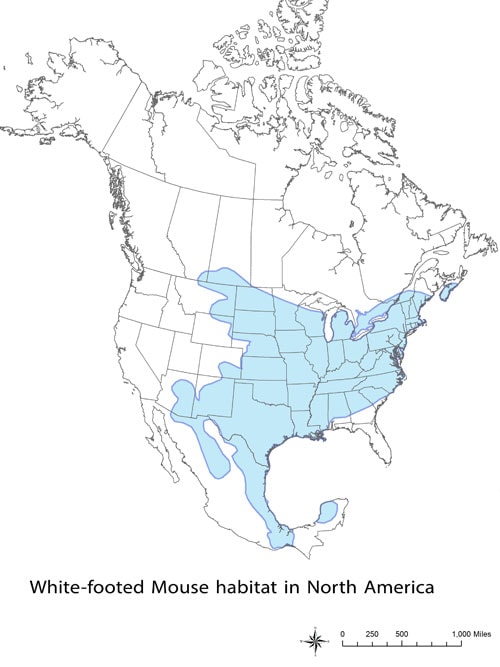Rodents in the United States That Carry Hantavirus
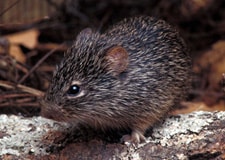
The cotton rat (Sigmodon hispidus), found in the southeastern US and down into Central and South America, has a bigger body than the deer mouse. The head and body measure approximately 5–7 inches (12.5cm–18cm), with another 3–4 inches (7.5cm–10cm) for the tail. The fur is longer and coarser, grayish-brown, even grayish-black, in color. The hantavirus strain present in the cotton rat is Black Creek Canal virus (BCCV). The cotton rat inhabits overgrown areas with shrubs and tall grasses.
Cotton Rat Habitat in North America
The cotton rat is found in the southeastern US and down into Central and South America. It inhabits overgrown areas with shrubs and tall grasses.
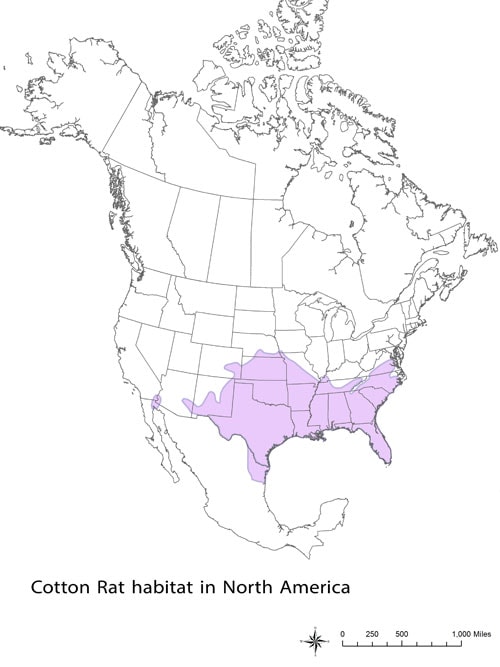
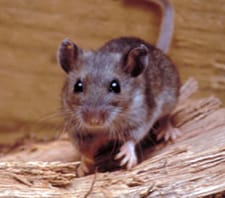
The deer mouse (Peromyscus maniculatus) is a deceptively cute animal, with big eyes and ears. Its head and body measure approximately 2–3 inches (5cm–7.5cm) in length, and the tail adds another 2–3 inches. In color, the deer mouse ranges from grey to reddish brown, depending on age. The underbelly is always white and the tail has clearly defined white sides. The hantavirus strain present in deer mice is Sin Nombre(SNV). The deer mouse is found throughout North America, preferring woodlands, but also appearing in desert areas.
Deer Mouse Habitat in North America
The deer mouse is found throughout North America, preferring woodlands, but also appearing in desert areas.
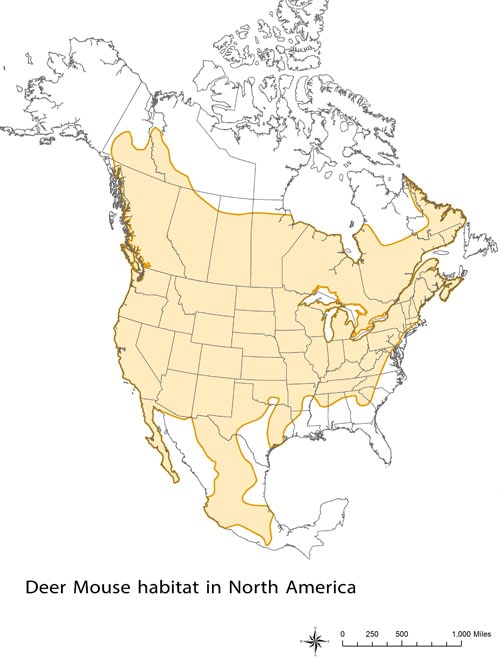
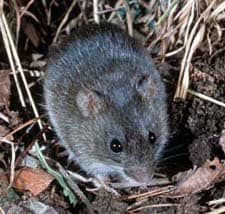
The rice rat (Oryzomys palustris) is slightly smaller than the cotton rat, with a 5–6 inch (7.5cm–15cm) head and a very long 4–7 inch (10cm–18cm) tail. It has short, soft, grayish-brown fur on top, and gray or tawny underbellies. Their feet are whitish. The rice rat prefers marshy areas and is semi-aquatic. The hantavirus strain present in the rice rat is Bayou virus (BAYV). It is found in the southeastern US and Central America.
Rice Rat Habitat in North America
The rice rat prefers marshy areas and is semi-aquatic. It is found in the southeastern US and Central America.
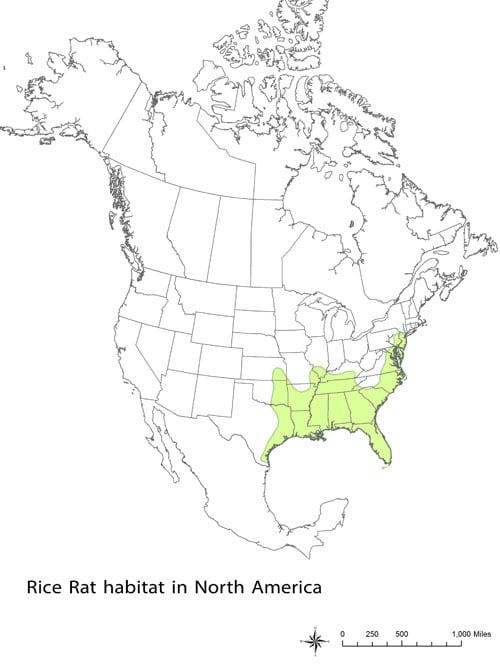
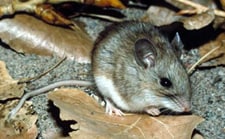
The white-footed mouse (Peromyscus leucopus) closely resembles the deer mouse. Head and body together measure approximately four inches (10cm). The tail is normally shorter than the body, typically 2–4 inches (5cm–10cm). Its top fur ranges from pale to reddish brown, while its underside and feet are white. The virus strain present in the white-footed mouse is New York virus (NYV). The white-footed mouse is found throughout southern New England, the Mid-Atlantic, parts of the southern states, the midwestern and western states, and Mexico. It prefers wooded and brushy areas, although it will sometimes inhabit more open ground.
White-Footed Mouse Habitat in North America
The white-footed mouse is found throughout southern New England and the Mid-Atlantic and southern states, the midwestern and western states, and Mexico. It prefers wooded and brushy areas, although it will sometime inhabit more open ground.
